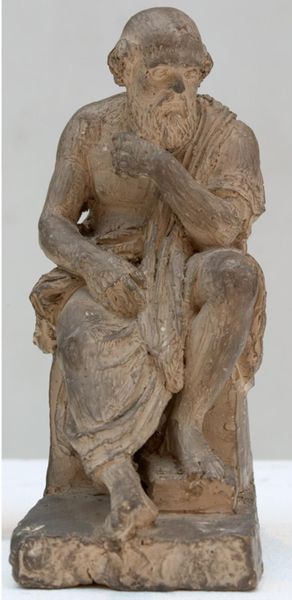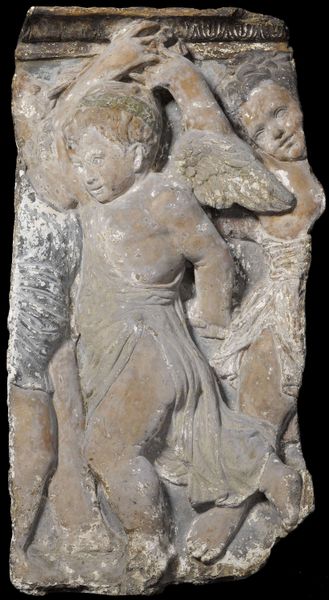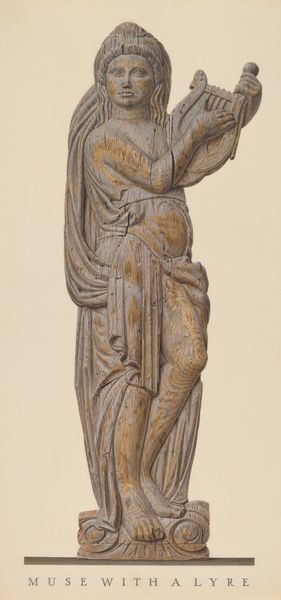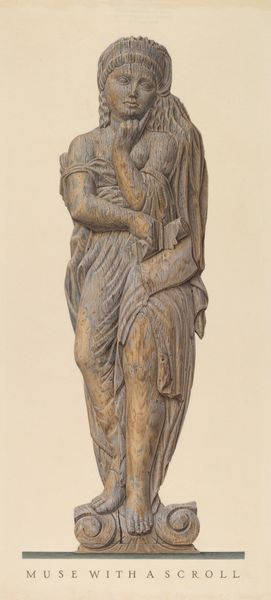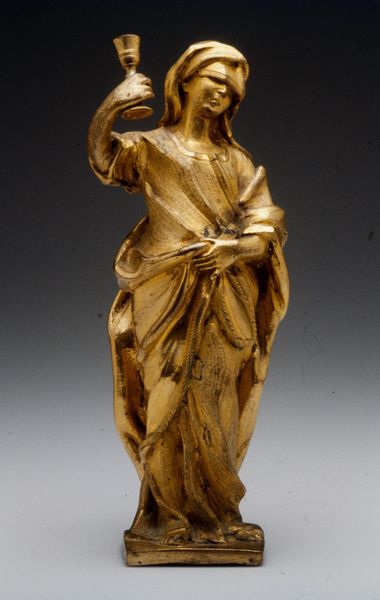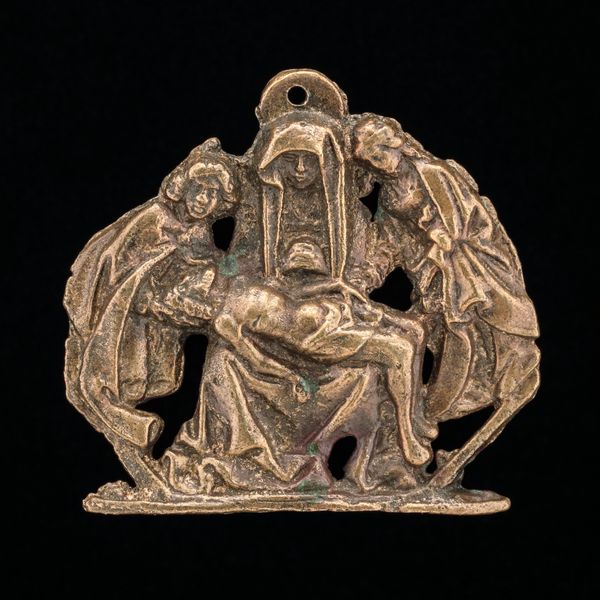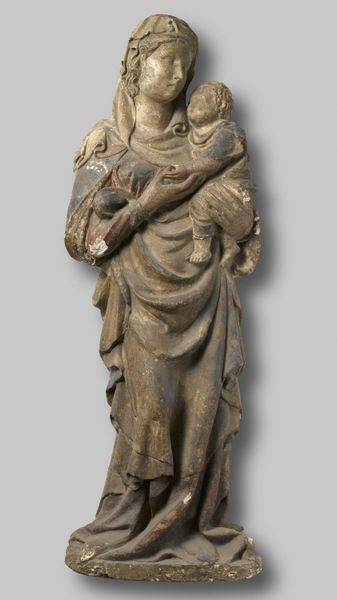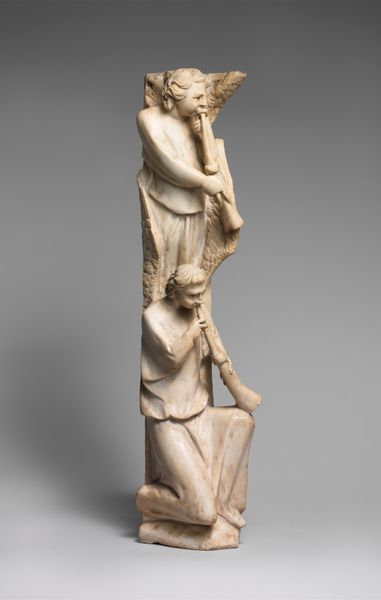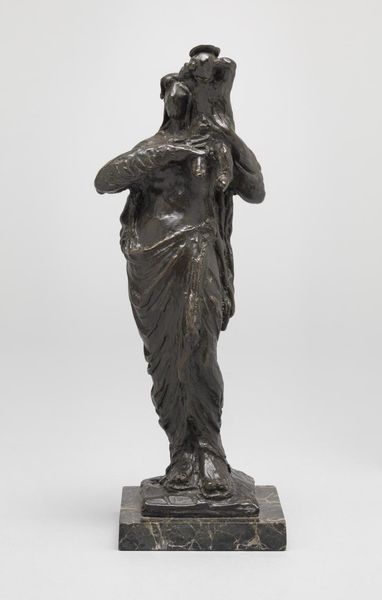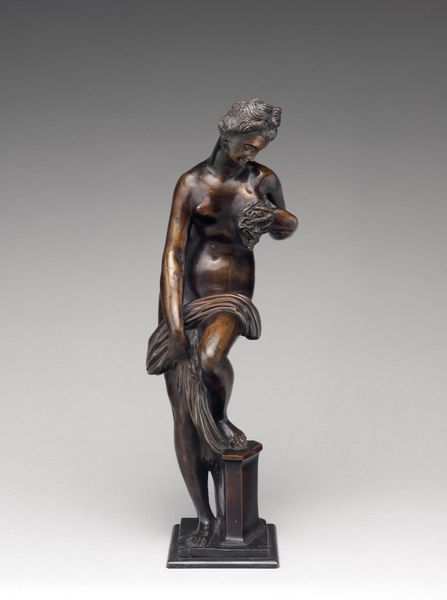
metal, bronze, sculpture
#
metal
#
sculpture
#
bronze
#
figuration
#
sculpture
#
history-painting
#
italian-renaissance
Dimensions: overall (silhouetted contour): 14 x 10.2 cm (5 1/2 x 4 in.) gross weight: 104 gr
Copyright: National Gallery of Art: CC0 1.0
Editor: So this bronze sculpture, "Christ Crowned with Thorns," dates back to the 16th century. It's really striking, how Christ is hunched over, almost withdrawn into himself. What do you see in this piece? Curator: This image carries a weight of history and religious symbolism. Think about the intentionality of portraying Christ not in triumphant glory, but in quiet suffering. It echoes the long history of representing pain, sacrifice and redemption. Can you see how the downward gaze and slumped posture function almost as a visual echo of humility and grief? Editor: Absolutely. It's a very human depiction, which makes the religious aspect all the more poignant. The crown of thorns is understated, almost delicate. Curator: Precisely. It invites reflection on the contrast between divinity and human frailty. What’s especially interesting is the bronze medium. Bronze connects with cultural memory harkening back to antiquity when bronze figures populated both sacred and civic spaces. Does the patina of age influence your perception of this sculpture? Editor: I think it does. It makes it feel older, more connected to history. Like I am observing something precious and significant. Curator: It’s a potent reminder that images act as a continuous thread linking past experiences with our present. This sculpture, with its blend of religious narrative and classical form, offers a compelling visual commentary on human and divine suffering. Editor: That makes me look at it differently. It is like a meeting of different histories converging into this one artwork. Thank you! Curator: It was my pleasure. Now I look at the piece with fresh eyes myself!
Comments
No comments
Be the first to comment and join the conversation on the ultimate creative platform.
